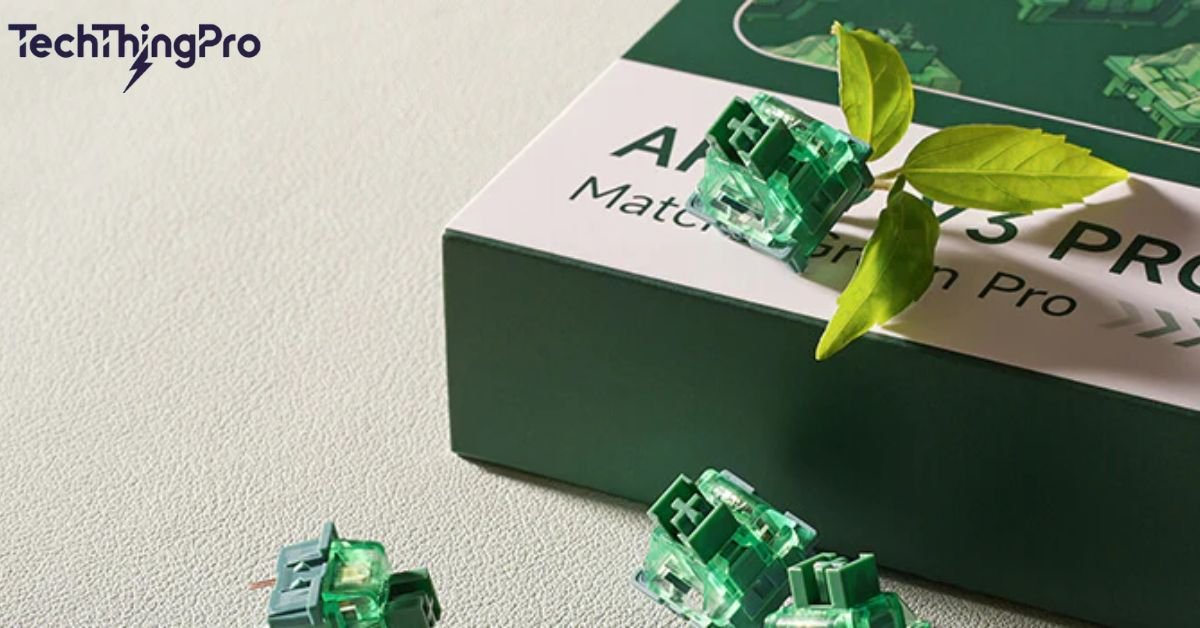linear vs tactile switches mechanical keyboard switches come in three main types linear, tactile, and clicky. Linear switches offer a smooth keystroke without any bump or click. Tactile switches provide a small bump when pressed, giving physical feedback without sound.
Understanding these differences is key to finding your perfect typing experience. Linear switches are smooth operators, ideal for gaming and fast typing. Tactile switches give you a satisfying bump, perfect for general typing and programming.
Clicky switches add an audible click to the tactile bump, beloved by typing enthusiasts. Your choice depends on your needs, preferences, and environment.
Introduction of Linear, Tactile, and Clicky Switches
Mechanical keyboard switches are the heart of any good keyboard. They come in three main flavors: linear, tactile, and clicky. Each type offers a unique typing experience with mechanical switches, catering to different preferences and needs.
Linear switches are smooth operators, tactile switches give you a little bump, and clicky switches, well, they click! Understanding these differences is key to finding your perfect match. Let’s break down each type and see what makes them tick (or click).
Read More : 12 Simple Ways To Fix Your Fire TV Black Screen
What are the linear switches?

Linear switches are the smooth talkers of the keyboard world. They offer a consistent, uninterrupted keystroke from top to bottom. Imagine gliding your fingers across a silk sheet – that’s the feel of a good linear switch.
Structure:
The magic of linear switches lies in their simple design. Inside, you’ll find a stem, a spring, and a smooth housing. When you press down, the stem moves straight down, compressing the spring without any bumps or clicks. This design allows for a smooth keystroke that many users find satisfying and efficient.
Popular for:
Linear switches are the darlings of the gaming world. linear vs tactile switches Their smooth, consistent action makes them ideal for fast response keyboard switches, perfect for competitive gaming switches. Many esports pros swear by linear switches for their speed and reliability.
But they’re not just for gamers – typists who prefer a smooth, quiet experience also love them. Popular options include the Cherry MX Red and Akko CS Silver switches.
What are the tactile switches?
Tactile switches are the Goldilocks of the keyboard world – not too smooth, not too clicky, but just right for many users. They offer a small bump in the middle of the keystroke, giving you physical feedback without the noise.
Structure:
Peek inside a tactile switch, and you’ll see a small bump on the stem. This bump creates resistance as you press down, giving you that characteristic tactile feedback. It’s like a little signpost telling your fingers, “Hey, you’ve activated the key!”
Popular for:
Tactile switches are versatile performers. They’re beloved by programmers, writers, and anyone who wants key press feedback without the noise. The bump helps prevent typos and provides a satisfying typing rhythm.
Many users find that tactile switches offer the best of both worlds – feedback without fatigue. The Cherry MX Brown and Akko CS Ocean Blue are popular tactile options.
What are the clicky switches?

Clicky switches are the extroverts of the keyboard world. They’re loud, proud, and make their presence known with every keystroke. If you love the sound of a typewriter, clicky switches might be your jam.
Structure:
Clicky switches have a complex internal mechanism. They feature a small metal leaf that creates an audible click when the switch is activated. This design produces both tactile and auditory feedback, giving you a double whammy of satisfaction with each press.
Popular for:
Clicky switches are the go-to for typing enthusiasts who love feedback. They’re popular among writers, programmers, and anyone who enjoys a nostalgic typing experience. The distinct sound can help with typing accuracy and provide a rhythmic cadence to your work.
Which Keyboard Switch Type is Best For You?
Choosing the right switch is like picking the perfect pair of shoes – it’s all about comfort and function. Your ideal switch depends on your needs, preferences, and environment. Let’s break it down:
For gamers, especially those into competitive gaming, linear switches are often the top choice. Their smooth action allows for rapid key presses and quick response times. If you’re all about speed and performance, linear switches might be your best bet.
For typists and programmers, tactile switches often hit the sweet spot. They provide feedback without the noise, helping to improve accuracy and reduce fatigue during long typing sessions. If you want a balance between gaming and typing, tactile switches could be your perfect match.
| Switch Type | Best For | Key Features |
| Linear | Gaming, fast typing | Smooth, quiet, consistent |
| Tactile | General typing, programming | Bump feedback, moderate noise |
| Clicky | Typing enthusiasts, data entry | Strong feedback, loud click |
Summary:
Linear Switches: Smooth operators perfect for gaming and fast typing. They offer a consistent feel from top to bottom, making them ideal for rapid key presses. However, some users might miss the tactile feedback.
Tactile Switches: The middle ground between linear and clicky. They provide a small bump for feedback without the noise, making them versatile for both typing and gaming. They’re a great all-rounder but might not satisfy those who crave either extreme smoothness or clickiness.
Clicky Switches: The noisy neighbors of the switch world. They offer strong tactile and auditory feedback, which can be great for typing accuracy. However, their loud nature might not be suitable for all environments.
Read More : How To Connect Firestick To WiFi Without Remote [6 Ways]?
Other Factors When Choosing a Switch
When diving into the world of mechanical switches, there’s more to consider than just the switch type. Two crucial factors that can make or break your typing experience are actuation force and key travel distance.
Actuation force
Actuation force refers to the amount of pressure needed to register a keypress. It’s measured in grams (g) and can range from very light (35g) to quite heavy (80g). Lighter switches can reduce finger fatigue during long typing sessions but may lead to accidental keypresses. Heavier switches provide a more deliberate typing experience but might tire your fingers faster.
Key travel & action points
Key travel distance is how far the key moves before it bottoms out. Most mechanical switches have a travel distance of 3.5mm to 4mm. The switch actuation point is where in this travel the keypress is registered, usually around the halfway point.
Some switches, like Akko Speed Silvers, have a shorter travel and earlier actuation point, which can be great for gaming but might take some getting used to for typing.
How do I distinguish the quality of the switch?
Not all switches are created equal. When you’re investing in a mechanical keyboard, you want switches that will stand the test of time and provide a consistent experience. Here’s what to look for:
Longevity
A high-quality switch should last for millions of keypresses. Look for switches rated for 50 million clicks or more. However, switch durability and longevity isn’t just about the numbers. Consider the materials used and the reputation of the manufacturer. Brands like Cherry and Akko are known for their reliable switches.
Consistency
Keyboard switch consistency is crucial for a good typing experience. Each switch of the same type should feel identical. Inconsistencies can lead to typos and a frustrating typing experience. When testing switches, pay attention to how each key feels compared to its neighbors.
The process of pressing the switch
Understanding how a switch feels throughout the entire keystroke can help you choose the right one. A good switch should have a smooth travel, a clear actuation point (for tactile and clicky switches), and a satisfying bottom-out feel.
Stability
Mechanical switch stability refers to how much the keycap wobbles when pressed. A stable switch provides a more precise typing experience and can reduce errors. Look for switches with tight tolerances and designs that minimize stem wobble.
Sound
The switch sound quality can greatly affect your typing experience. Some people love a loud, clicky sound, while others prefer a quieter typing experience. Consider your environment and personal preferences when evaluating switch sound. Remember, factors like keycap material and keyboard construction can also influence the overall sound profile.
Conclusion
So, there you have it – the lowdown on linear, tactile, and clicky switches. Each type has its own unique feel and sound, catering to different needs and preferences. Remember, there’s no one-size-fits-all solution when it comes to keyboard switches.
Get your hands on a switch tester and try them out yourself. Don’t be afraid to experiment – you might be surprised by what feels right to you. Whether you’re a gamer, a writer, or just someone who loves a good typing experience, there’s a switch out there waiting for you. Happy typing!

Lily Watkins is an experienced tech writer specializing in the latest trends and innovations. She is passionate about making complex technology accessible and shares her insights on TechThingPro.com.

